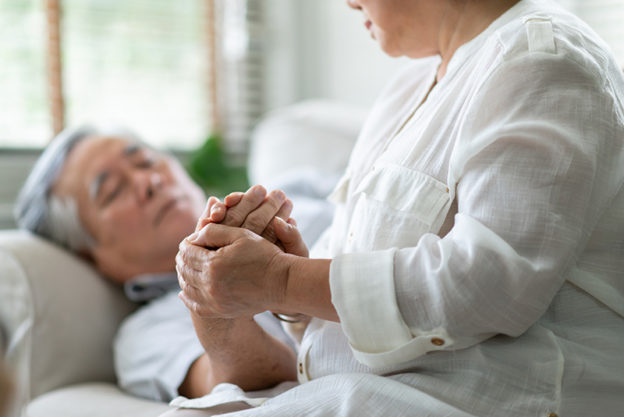Instructor
John Lambert, MD
Full Clinical Professor, University College Dublin School of Medicine
Consultant in Infectious Diseases and Genitourinary Medicine, Mater Misericordiae University Hospital
Description
This CME is intended to help clinicians draw a parallel between long COVID and long Lyme disease by understanding the clinical manifestations and potential treatment options. Content for this free course was compiled by a team of clinicians, and researchers potentially speeding up treatment decisions and saving lives.
Learning objectives
- Describe what we can learn from chronic Lyme and apply to long COVID
- Understand the potential role of chronic infection, autoimmunity and inflammation as it relates to patient symptoms
- Increase awareness of the options for treatment of long COVID
This session, Long Lyme/Co-Infections and Long COVID | What do they have in common?, is approved for 0.5 enduring AAFP Prescribed credits.
AAFP Prescribed credit is accepted by the American Medical Association as equivalent to AMA PRA Category 1 credit(s)™ toward the AMA Physician’s Recognition Award. When applying for the AMA PRA, Prescribed credit earned must be reported as Prescribed, not as Category 1.
The AAFP has reviewed One Health Medical Education for a Changing Climate and deemed it acceptable for AAFP credit. Term of approval is from 01/02/2024 to 01/01/2025. Physicians should claim only the credit commensurate with the extent of their participation in the activity.
References:
Stricker et al. Research Journal of Infectious Diseases 2013, http://www.hoajonline.com/journals/pdf/2052-5958-1-2.pdf
Embers ME, et al. Persistence of Borrelia burgdorferi in rhesus macaques following antibiotic treatment of disseminated infection. PLoS One. 2012;7(1):e29914. Epub 2012 Jan 11.
Hodzic E, et al. Resurgence of Persisting Non-Cultivable Borrelia burgdorferi following Antibiotic Treatment in Mice. PLoS ONE 9(1): e86907. doi:10.1371/journal.pone.0086907, 2014
Treib J, Fernandez A, Haass A, Grauer MT, Holzer G, Woessner R. Clinical and serologic follow-up in patients with neuroborreliosis. Neurology. 1998 Nov;51(5):1489-91.
Oksi J, Nikoskelainen J, Viljanen MK. Comparison of oral cefixime and intravenous ceftriaxone followed by oral amoxicillin in disseminated Lyme borreliosis. Eur J Clin Microbiol Infect Dis. 1998;17(10):715-9.
Strle F, Preac-Mursic V, Cimperman J, Ruzic E, Maraspin V, Jereb M. Azithromycin versus doxycycline for treatment of erythema migrans: clinical and microbiological findings. Infection. 1993 Mar-Apr;21(2):83-8.
Weber K, Wilske B, Preac-Mursic V, Thurmayer R. Azithromycin versus penicillin V for the treatment of early Lyme borreliosis. Infection 1993;21(6):367-72
Schmidli J, Hunziker T, Moesli P, Schaad UB. Cultivation of Borrelia burgdorferi from joint fluid three months after treatment of facial palsy due to Lyme borreliosis. J Infect Dis. Oct 1988;158(4):905-906
Preac-Mursic V, Pfister HW, Spiegel H, et al. First isolation of Borrelia burgdorferi from an iris biopsy. J Clin Neuroophthalmol. Sep 1993;13(3):155-161; discussion 162.
Preac-Mursic V, Weber K, Pfister HW, et al. Survival of Borrelia burgdorferi in antibiotically treated patients with Lyme borreliosis. Infection. Nov-Dec 1989;17(6):355-359.
Nocton JJ, Dressler F, Rutledge BJ, Rys PN, Persing DH, Steere AC. Detection of Borrelia burgdorferi DNA by polymerase chain reaction in synovial fluid from patients with Lyme arthritis.N Engl J Med. 1994 Jan 27;330(4):229-34.
Oksi J, Marjamäki M, Nikoskelainen J, Viljanen MK. Borrelia burgdorferi detected by culture and PCR in clinical relapse of disseminated Lyme borreliosis. Ann Med. 1999 Jun;31(3):225-32.
Feng J, et al Identification of novel activity against Borrelia burgdorferi persisters using an FDA approved drug library Emerging Microbes and Infections (2014)3,e49;doi:10.1038/emi.2014.53
Sharma, B., Brown, A., Matluck, N., Hu, L., Lewis, K. (2015) Borrelia burgdorferi, the causative agent of Lyme disease, forms drug-tolerant persister cells. Antimicrob Agents Chemother. 59:4616-24
Steere AC, Schoen RT, Taylor E The clinical evolution of Lyme arthritis Ann Intern Med 1987 Nov;107(5):725-31 (Study Excluded From NICE review, Annals of Internal Medicine
Coughlin, J.M., Yang, T., Rebman, A.W. et al. Imaging glial activation in patients with post-treatment Lyme disease symptoms: a pilot study using [11C]DPA-713 PET. J Neuroinflammation 15, 346 (2018). https://doi.org/10.1186/s12974-018-1381-4
O’Kelly B, Vidal L, Avramovic G, Broughan J, Connolly SP, Cotter AG, Cullen W, Glaspy S, McHugh T, Woo J, Lambert JS. Assessing the impact of COVID-19 at 1-year using the SF-12 questionnaire: Data from the Anticipate longitudinal cohort study. Int J Infect Dis. 2022 May;118:236-243. doi: 10.1016/j.ijid.2022.03.013. Epub 2022 Mar 14. PMID: 35301101; PMCID: PMC8920113.
Broughan J, McCombe G, O’Kelly B et al. Mental health and alcohol use among patients attending a post-COVID-19 follow-up clinic: a cohort study [version 1; peer review: 1 approved]. HRB Open Res 2022, 5:16 (https://doi.org/10.12688/hrbopenres.13503.1)
Verger A, Kas A, Dudouet P, Goehringer F, Salmon-Ceron D, Guedj E. Visual interpretation of brain hypometabolism related to neurological long COVID: a French multicentric experience. Eur J Nucl Med Mol Imaging. 2022 Jul;49(9):3197-3202. doi: 10.1007/s00259-022-05753-5. Epub 2022 Mar 23. PMID: 35320385; PMCID: PMC8941296.
O’Kelly B, Vidal L, McHugh T, Woo J, Avramovic G, Lambert JS. Safety and efficacy of low dose naltrexone in a long covid cohort; an interventional pre-post study. Brain Behav Immun Health. 2022 Oct;24:100485. doi: 10.1016/j.bbih.2022.100485. Epub 2022 Jul 3. PMID: 35814187; PMCID: PMC9250701.
Pedro Gutiérrez-Castrellón, Tania Gandara-Martí, Ana T. Abreu Y Abreu, Cesar D. Nieto-Rufino, Eduardo López-Orduña, Irma Jiménez-Escobar, Carlos Jiménez-Gutiérrez, Gabriel López-Velazquez & Jordi Espadaler-Mazo (2022) Probiotic improves symptomatic and viral clearance in Covid19 outpatients: a randomized, quadruple-blinded, placebo-controlled trial, Gut Microbes, 14:1, 2018899, DOI: 10.1080/19490976.2021.2018899


